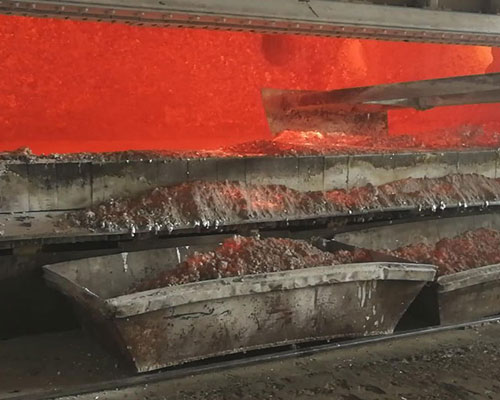Molten Metal Degassing is important step in metal casting process. Degassing with Nitrogen is usually used. Inert gas refers to the gas that does not react with aluminum melt and dissolved hydrogen, and does not dissolve in aluminum.
The slag can be removed by blowing inert gas into the melt is that many fine bubbles are formed after the emotional gas is blown into the molten aluminum. When the bubbles pass through the melt, they meet the oxide inclusions in the melt, and the inclusions are adsorbed on the surface of the bubbles and float up to the surface of the melt with the bubbles. The oxide which has been brought to the liquid surface can’t automatically separate from the gas phase and re dissolve into the liquid aluminum. It can be removed by accumulating on the surface of the liquid aluminum.
Since the total surface free energy of the system decreases after the inert gas bubble adsorbs the oxide inclusions in the melt, the adsorption can occur automatically. The smaller the surface tension between inert gas and inclusion is, the greater the surface tension between melt and inert gas and between melt and inclusion is, the stronger the slag removal ability of this inert gas is.

When using inert gas for molten metal refining, the liquid level should be evenly sprinkled with refining flux. This is because after the inert gas bubble brings the inclusions out of the liquid surface, if there is a flux layer on the liquid surface, the inclusions will enter the flux and become molten slag, which is easy to pick out. Otherwise, the inclusions with higher density will fall into the liquid aluminum again, while the inclusions with lower density will form scum on the liquid aluminum surface, which is difficult to separate from the liquid aluminum. Because the adsorption occurs at the interface between bubble and melt, only limited melt can be contacted, so the slag removal effect is limited.
The more bubbles are produced, the smaller the bubble radius is, the more uniform the distribution is, and the longer the blowing time is, the better the slag removal effect is.
It is based on the principle of partial pressure difference degassing. Because there is no hydrogen in the emotional gas bubble blown into the melt, its hydrogen partial pressure is zero, and the hydrogen partial pressure in the melt near the bubble is far greater than zero. Therefore, there is a hydrogen partial pressure difference inside and outside the bubble, which makes the hydrogen dissolved in the metal continuously diffuse into the bubble, and the hydrogen entering the bubble escapes into the atmosphere with the bubble rising. In addition, the micro hydrogen bubbles suspended in the melt and the gas in the inclusion can also be brought out of the liquid surface by flotation during the bubble floating process, so as to achieve the purpose of molten metal degassing.

